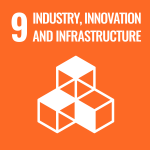SDGs supported:
The exposure of critical infrastructure to natural and human-induced hazards, including hybrid threats, presents severe challenges to global economies and societies. These challenges are intensified by the complexity of modern cyber-physical systems within technology-enabled city ecosystems.
In response, we deliver AI-driven, real-time solutions for resilience enhancement through a threat-agnostic approach that is adaptable to diverse hazards, faults, and cascading failures:





Our approach to threat-agnostic resilience

Resilience modelling – see more here
Real-time, resilience-based response framework and metrics
We pioneer a threat-agnostic methodology to anticipate and mitigate the impacts of hybrid threats—including natural disasters (e.g., climate hazards and compounds, floods, wildfires), cybersecurity incidents, and high-impact, low-probability events—on critical infrastructure and smart cities. To achieve this, we leverage AI-powered scenario generation (GenAI) and validation (case studies) to address cascading failures and tipping points across interconnected and interdependent systems.
AI-driven integration and digital twin technology
We develop platforms to integrate, fuse, and analyse real-time, multimodal data from IoT sensors, crowdsourced information, and disparate datasets into dynamic digital twins. We deploy monitoring into situational awareness platforms to support decision-making, incident response, and accelerate recovery and adaptation strategies across our use cases.
Automated decision support systems for complex infrastructure systems
We enable interoperable communication channels between operators, end-users, and first responders through ethical and explainable AI systems. We deliver key functionalities such as Common Operational Picture and Decision Support Systemsto streamline coordination and resource allocation.
Proactive mitigation of cascading failures
We democratise resilience planning in collaboration with stakeholders and people. We do that by simulating diverse fault scenarios in digital twin environments to test and validate AI responses for safety, efficiency, and fairness.
Impact
Our innovative approaches ensure that critical infrastructure can withstand and recover from a wide spectrum of hazards and faults while maintaining operational continuity. By integrating advanced technologies, fostering collaboration, and enhancing resilience metrics, our solutions contribute to sustainable and resilient urban ecosystems, aligning with global objectives such as the UN SDGs and EU resilience frameworks.
Funding received from our UKRI, British Academy and HORIZON research grants, see more here



